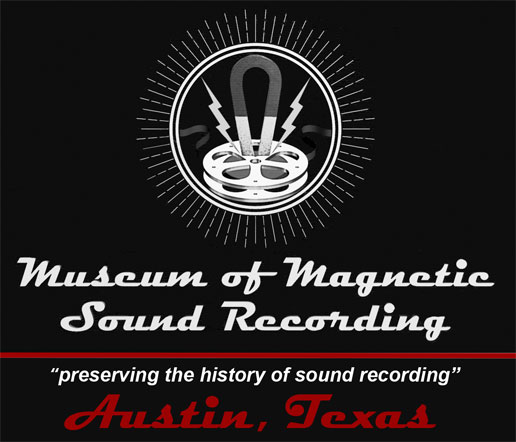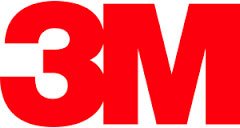3M Minnesota Mining and Manufacturing Co.
Five businessmen founded 3M in Two Harbors, Minnesota, in 1902.
Originally a mining venture, the goal was to mine corundum, but this failed because the mine's mineral holdings were anorthosite, which had no commercial value. Co-founder John Dwan solicited funds in exchange for stock and Edgar Ober and Lucius Ordway took over the company in 1905. The company moved to Duluth and began research and producing sandpaper products. William L. McKnight, later a key executive, joined the company in 1907, and A. G. Bush joined in 1909.[6] 3M finally became financially stable in 1916 and was able to pay dividends. 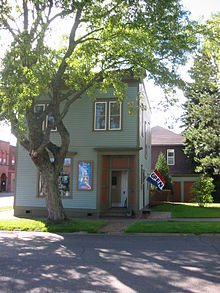
The company moved to St. Paul, where it remained for 52 years before outgrowing the campus and moving to its current headquarters at 3M Centre in Maplewood, Minnesota. The new Maplewood campus is 475 acres (1.92 km2) and has over 50 buildings, including an Innovation Center that displays products 3M has taken to market. The building in which the company was founded is now a museum (right).
The company began by mining stone from quarries for use in grinding wheels. Struggling with quality and marketing of its products, management supported its workers to innovate and develop new products, which became its core business .Twelve years after its inception, 3M developed its first exclusive product: Three-M-ite cloth. Other innovations in this era included masking tape, waterproof sandpaper, and Scotch brand tapes. By 1929, 3M had made its first moves toward international expansion by forming Durex to conduct business in Europe. The same year, the company’s stock was first traded over the counter and in 1946 listed on the New York Stock Exchange (NYSE). The company is currently a component of the Dow Jones Industrial Average and of the S&P 500.
The founders original plan was to sell the mineral corundum to manufacturers in the East for making grinding wheels. After selling one load, on June 13, 1902, the five went to the Two Harbors office of company secretary John Dwan, which was on the shore of Lake Superior and is now part of the 3M National Museum, and signed papers making Minnesota Mining and Manufacturing a corporation. In reality, however, Dwan and his associates were not selling what they thought; they were really selling the worthless mineral anorthosite.[8]
Failing to make sandpaper with the anorthosite, the founders decided to import minerals like Spanish garnet, after which sale of sandpapers grew. In 1914, customers complained that the garnet was falling off the paper. The founders discovered that the stones had traveled across the Atlantic Ocean packed near olive oil, and the oil had penetrated the stones. Unable to take the loss of selling expensive inventory, they roasted the stones over fire to remove the olive oil; this was the first instance of research and development at 3M.
3M manufactures magnetic recording tape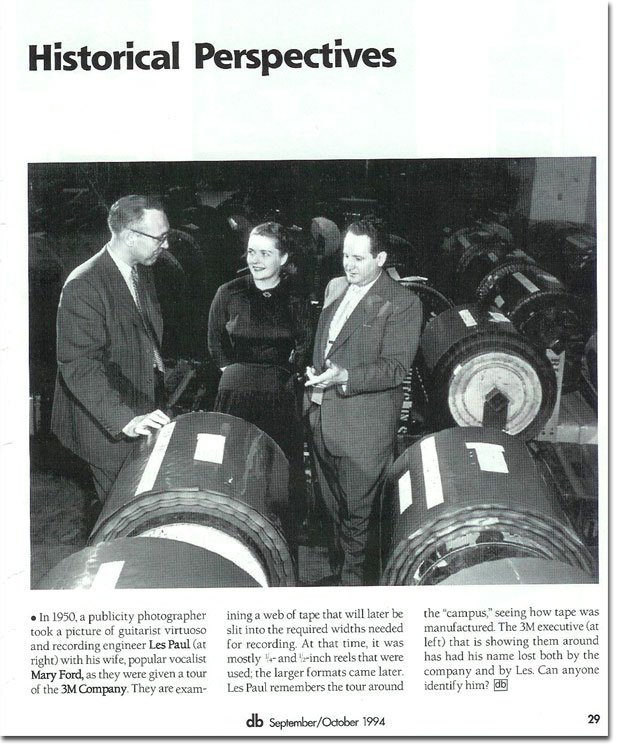
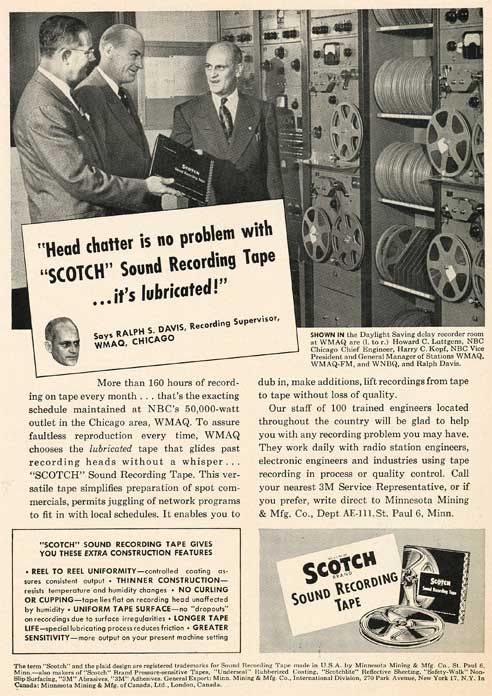 In 1947/48 3M had developed a black oxide plastic backed tape that evolved from their paper backed tape. It was the Scotch Magnetic Tape No. 100 designed for the Brush recorder, which was an early tape recorder. However, the Magnetophon needed a tape that could record a stronger magnetic field and have a better signal-to-noise ratio. The research group at 3M realized this need and set out to develop a higher grade tape using a red oxide, not knowing what the target machine would be.
In 1947/48 3M had developed a black oxide plastic backed tape that evolved from their paper backed tape. It was the Scotch Magnetic Tape No. 100 designed for the Brush recorder, which was an early tape recorder. However, the Magnetophon needed a tape that could record a stronger magnetic field and have a better signal-to-noise ratio. The research group at 3M realized this need and set out to develop a higher grade tape using a red oxide, not knowing what the target machine would be.
"Starting in 1948, dozens of American companies joined the race to build the best or the cheapest or the largest or the smallest professional and consumer tape recorders. 3M’s “Scotch 111” audio tape brand became the world sales leader. The Americans made rapid progress in their research in and development of magnetic recording technology. BASF accepted the fact that 3M had made certain technical advances in tape manufacturing by naming their 1953 consumer tape series “Magnetophon Tape Type LGS”. Only industry insiders knew the “S”designation meant “Scotch-compatible”, indicating the technical compatibility of Type LGS with the new 3M formulation being used on many consumer tape decks of the time. Cellulose acetate tape such as Scotch 111, whose base film was almost identical to Type C tape, was widely used in America until well into the 1960s, when it was replaced with polyester. American broadcasters who used acetate tape for decades and who hear the story of the birth of German tape are surprised to learn that a plastic-based PVC tape was in use in Germany as early as 1943." re A Selected History of Magnetic Recording by Friedrich Engel and Peter Hammar; additional editing by Richard L. Hess
Listing of 3M reel to reel recording tape versions
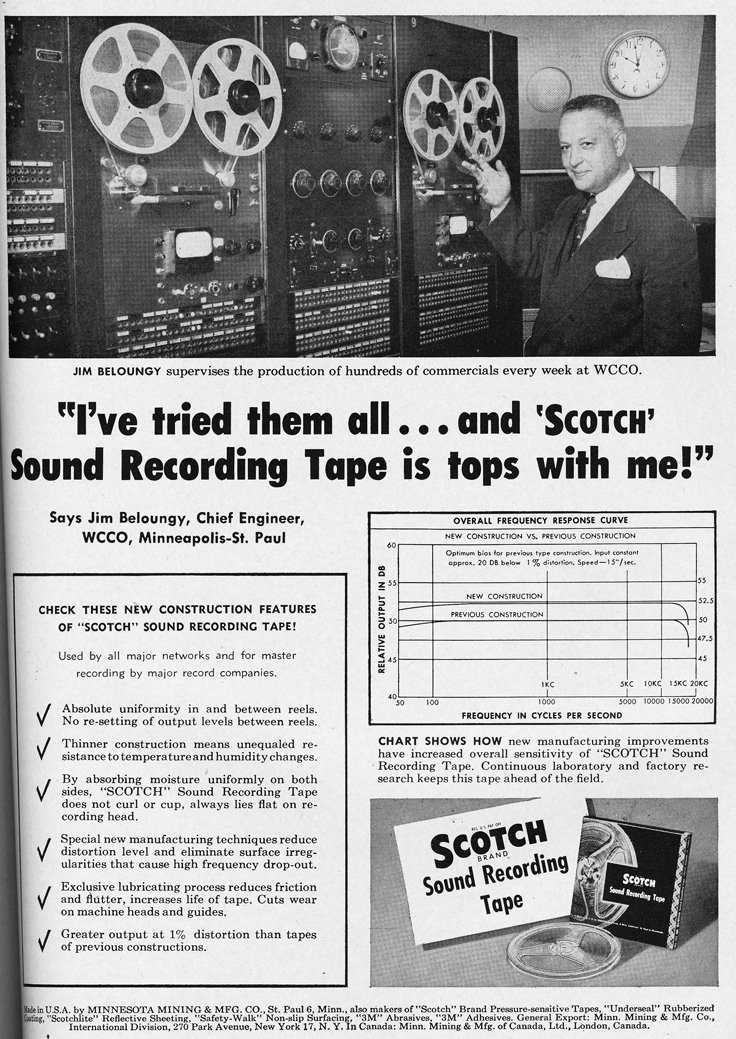
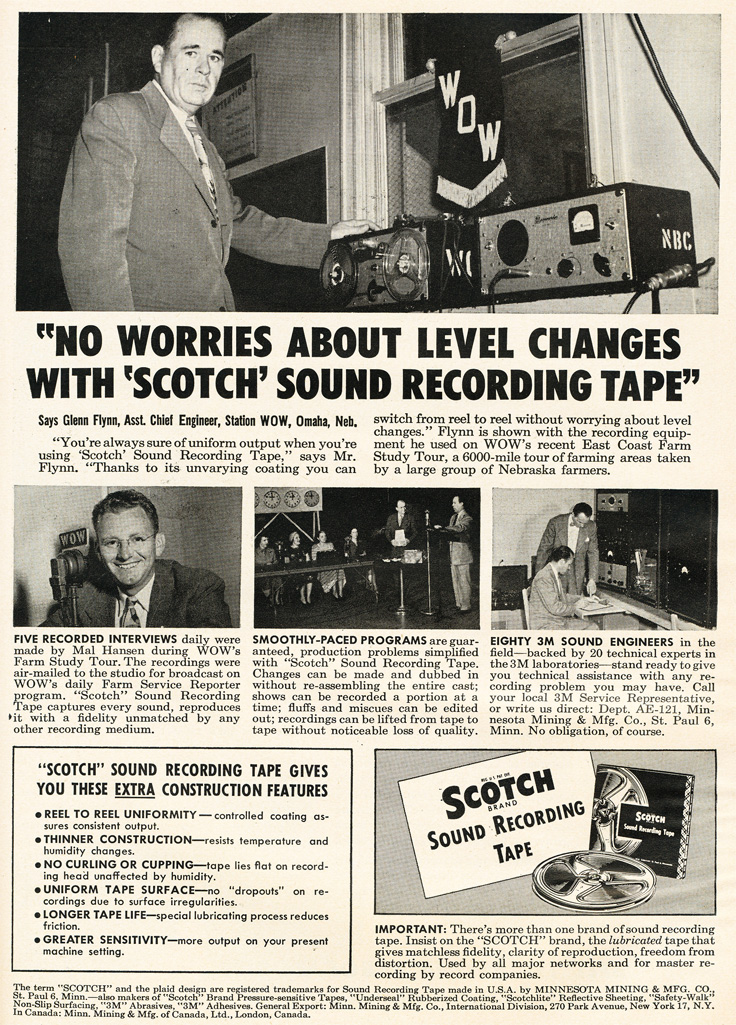
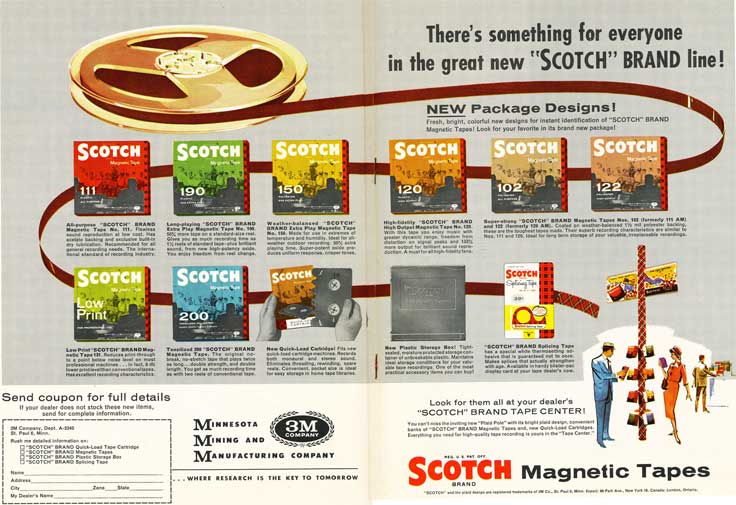
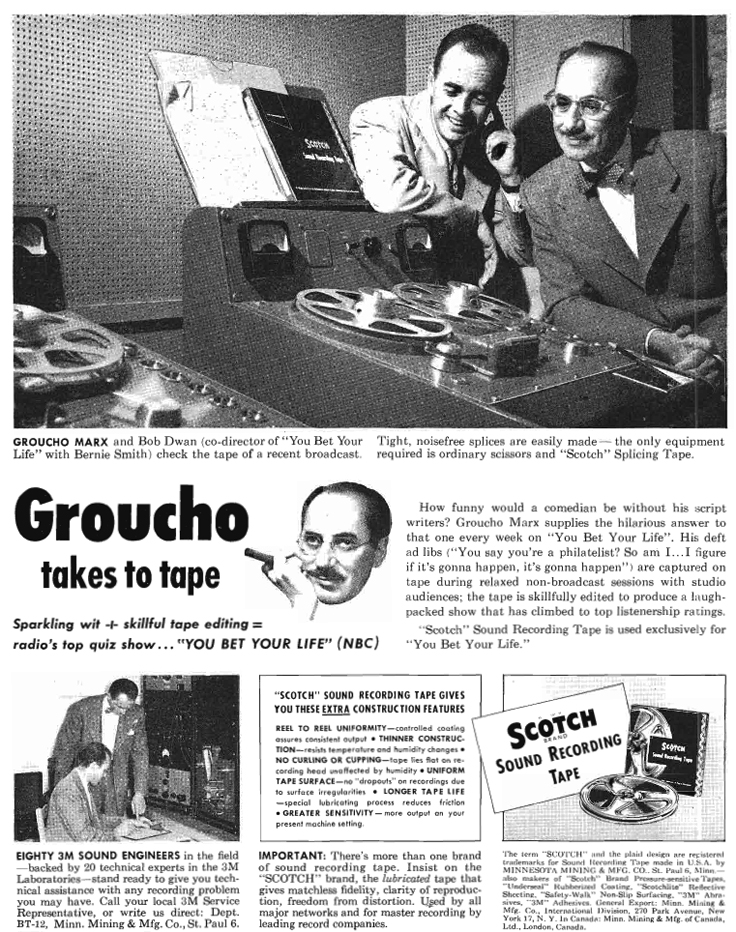
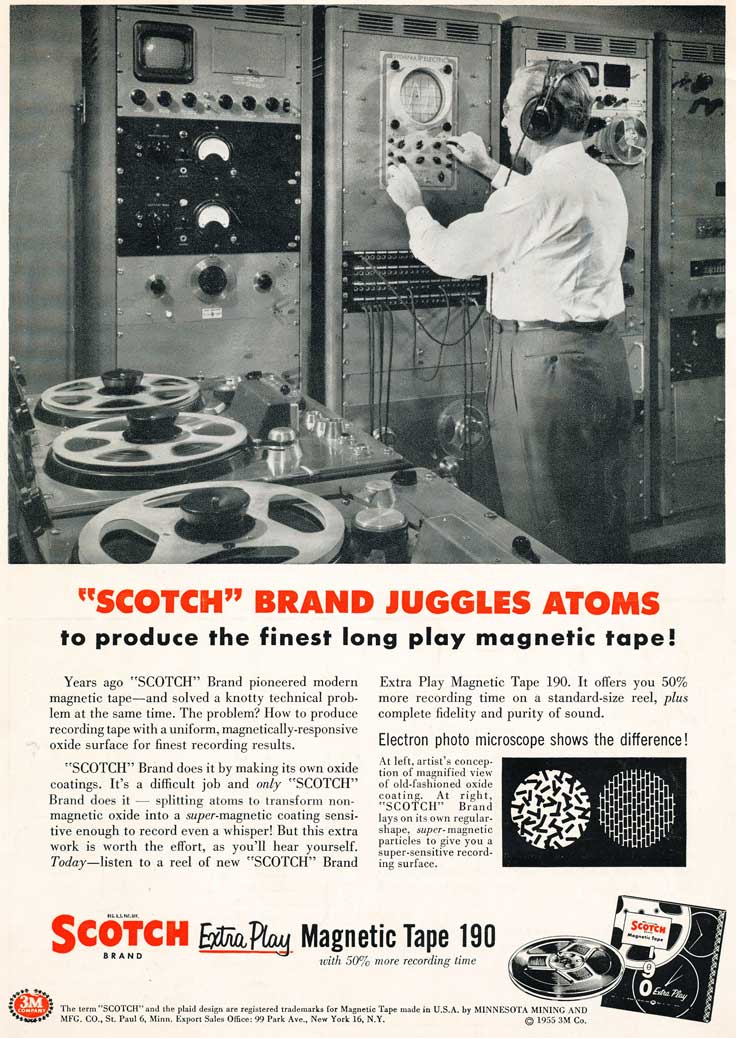
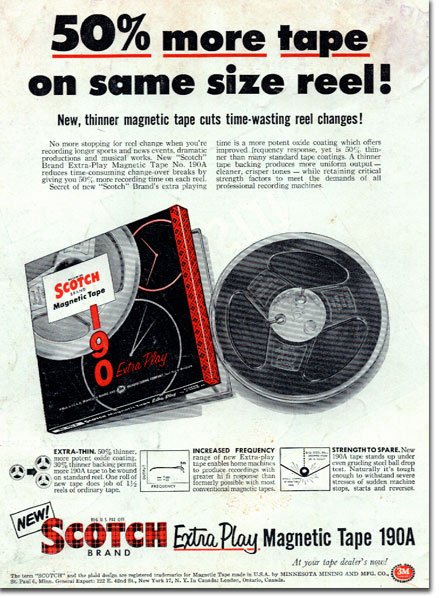
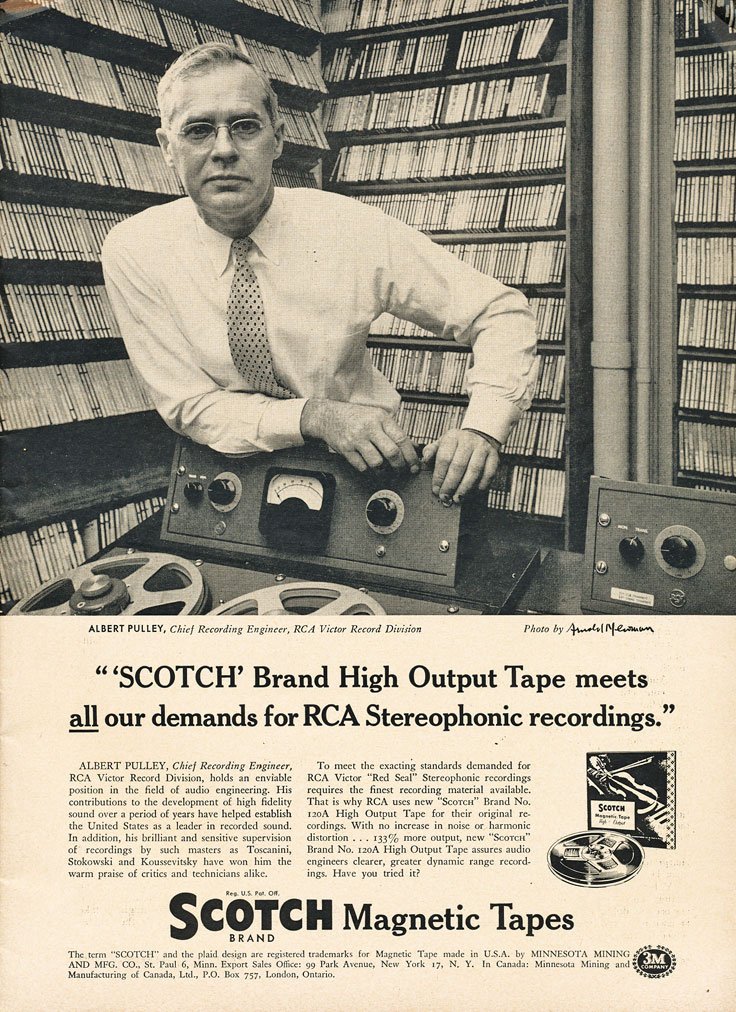
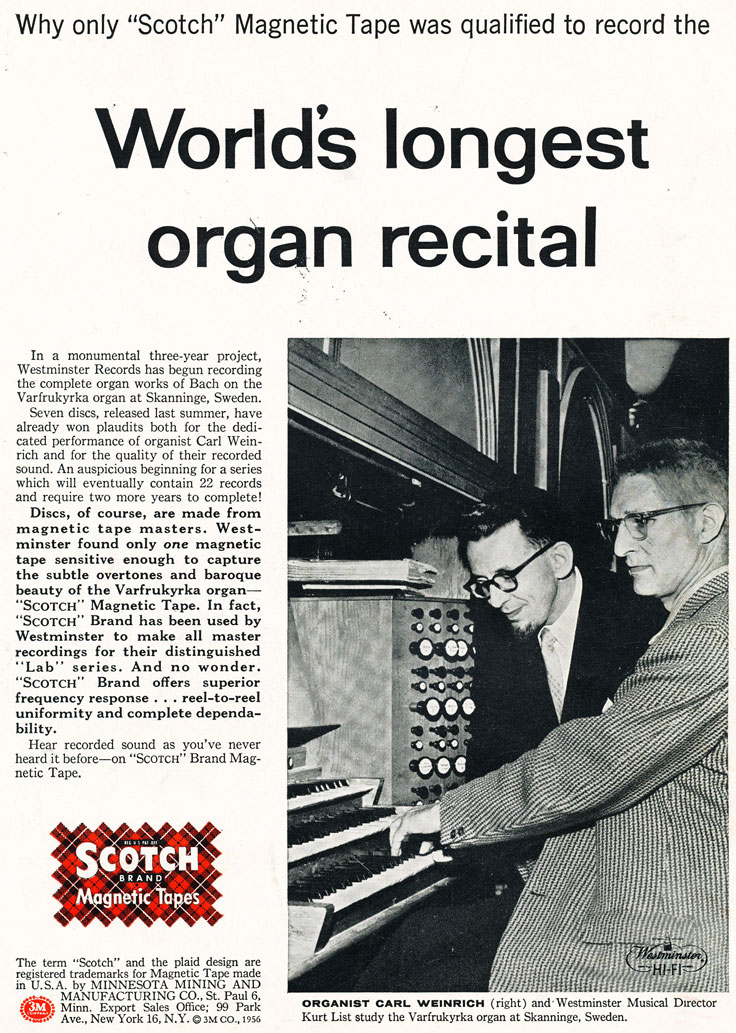
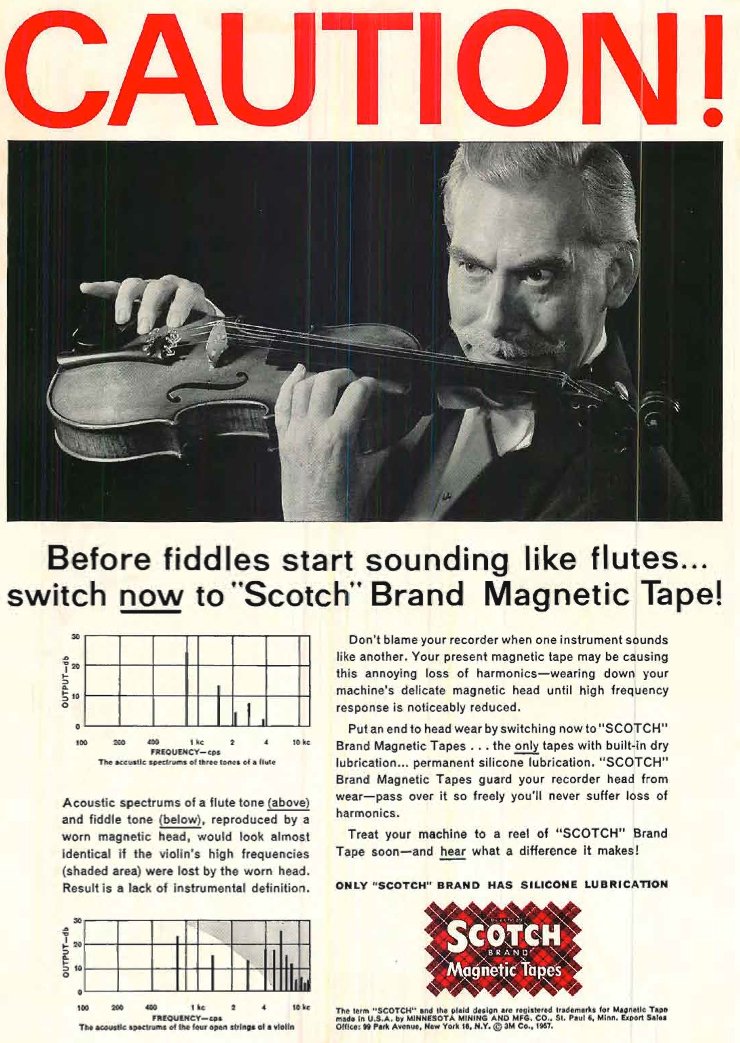
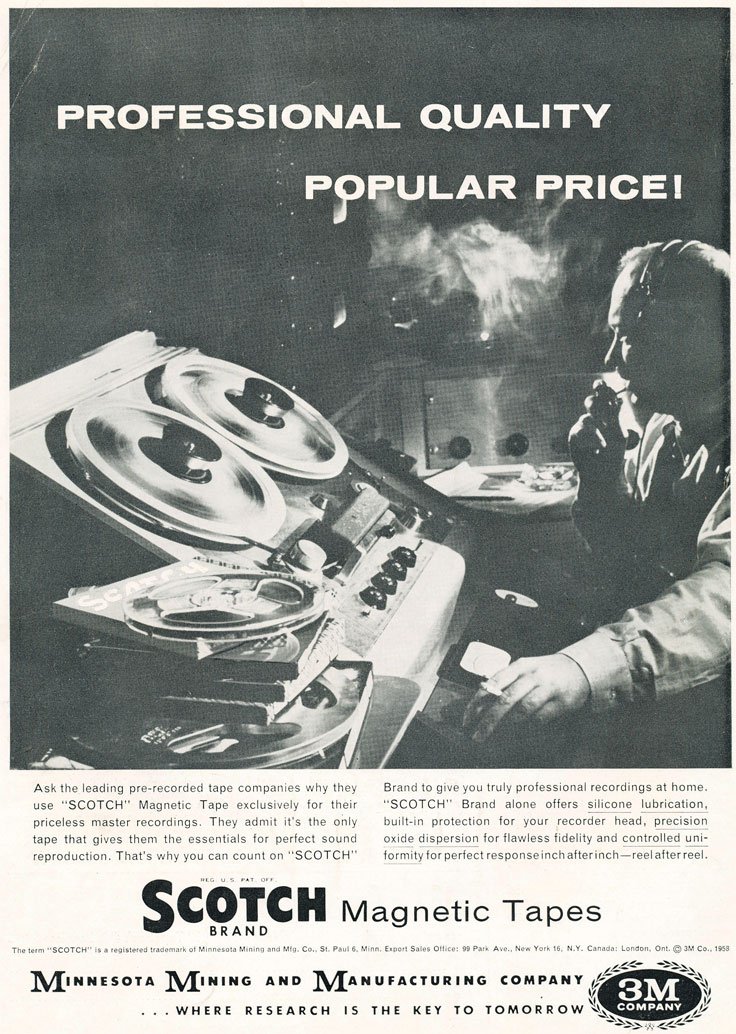
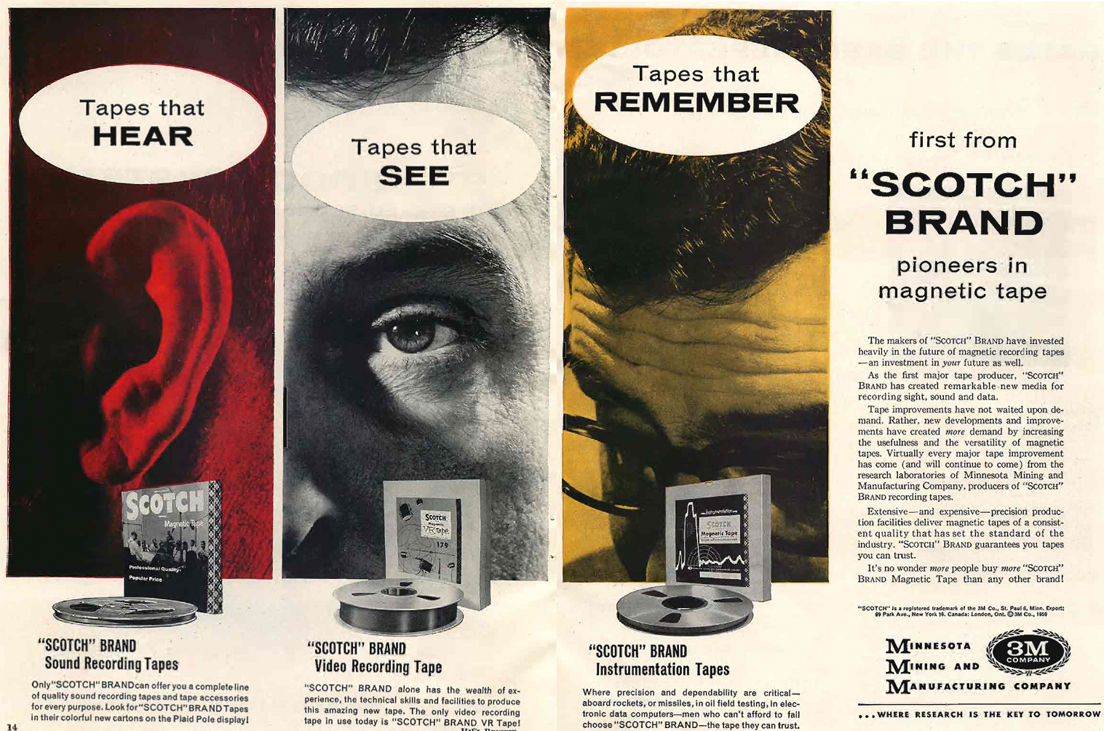
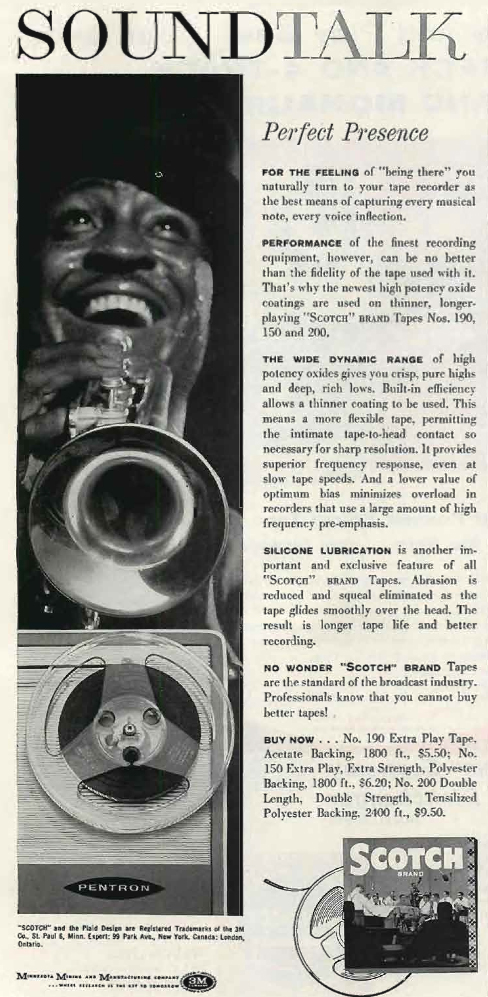
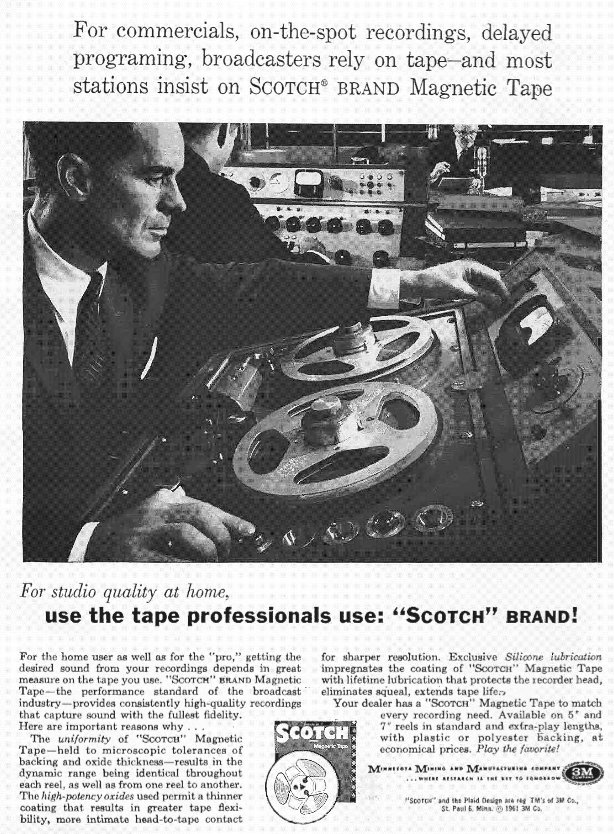
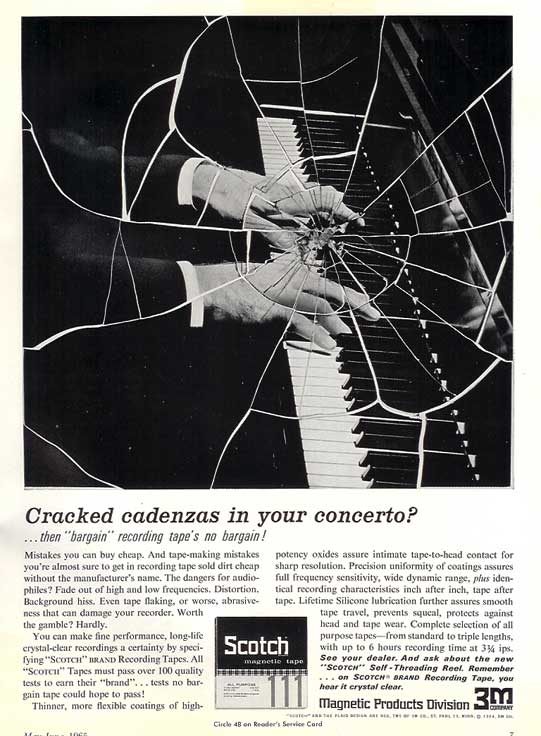
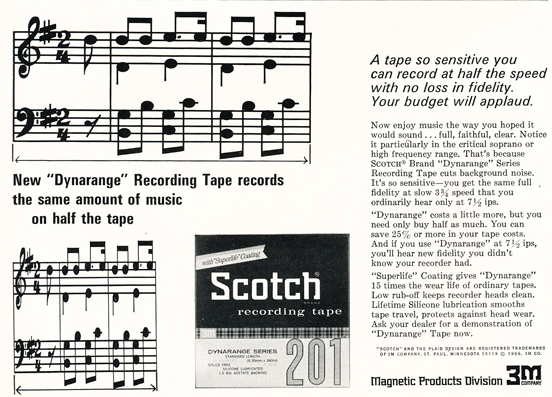
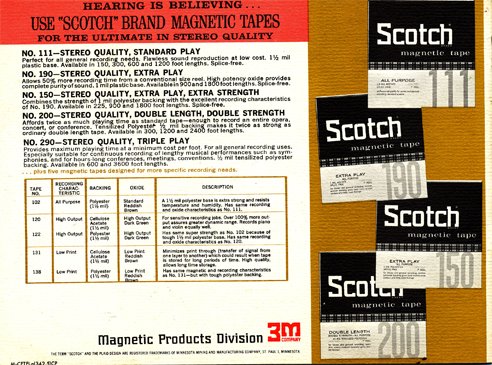
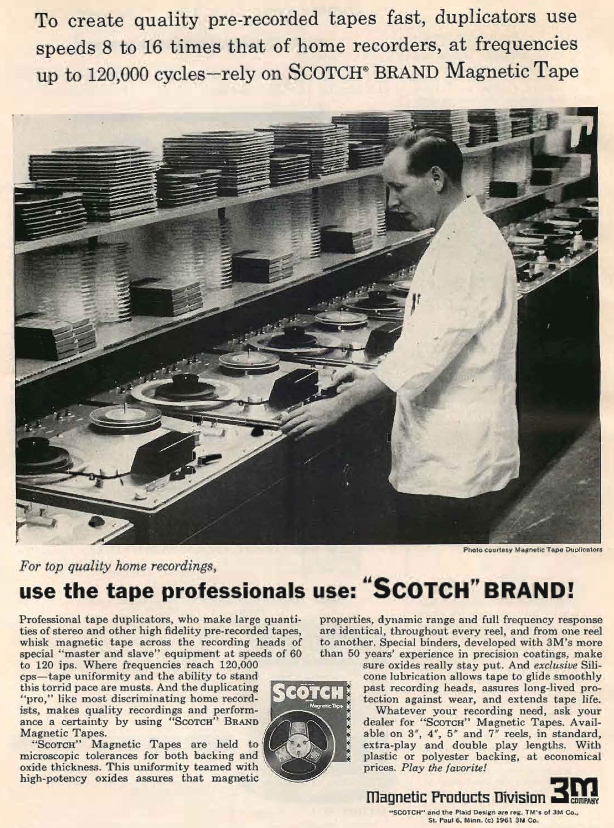
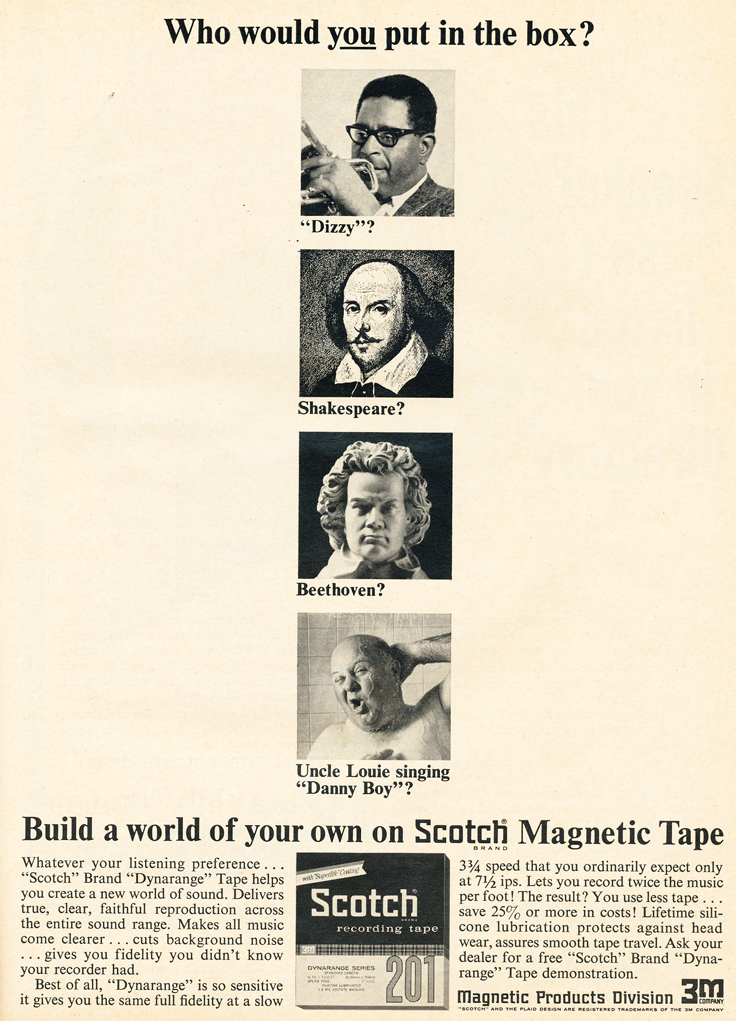
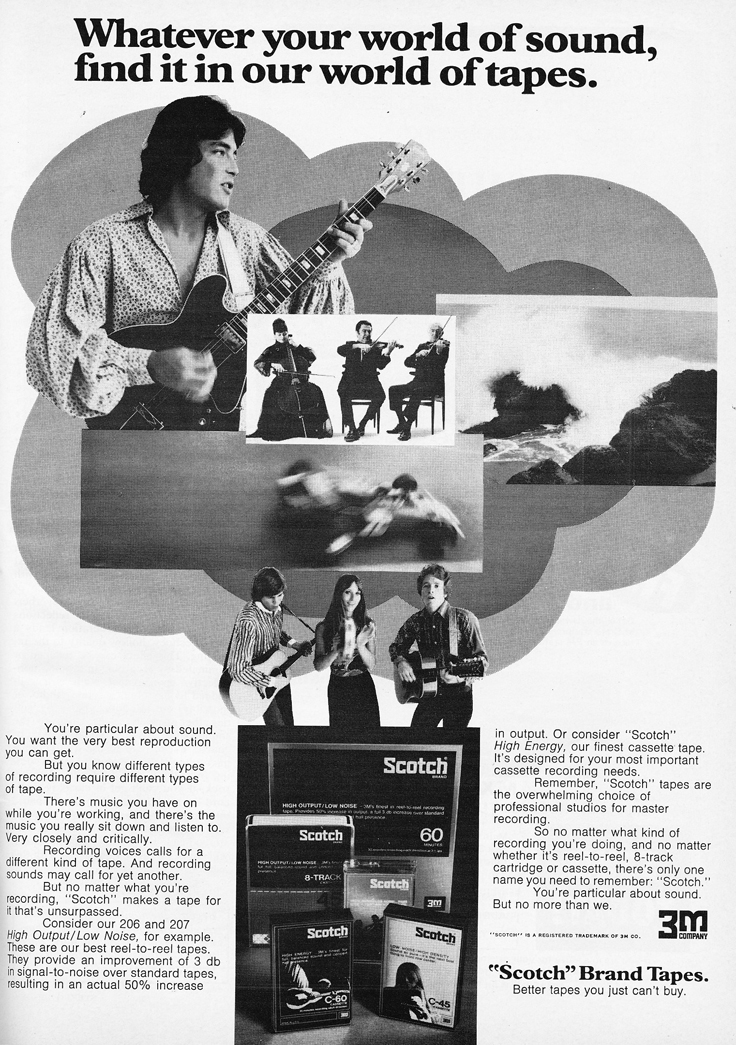
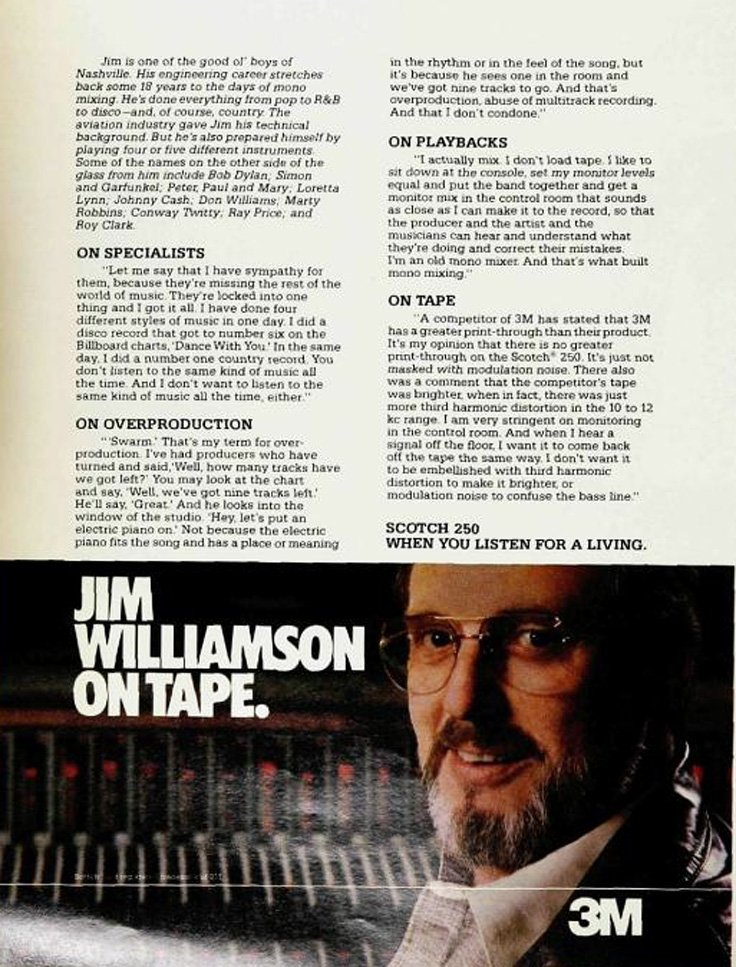
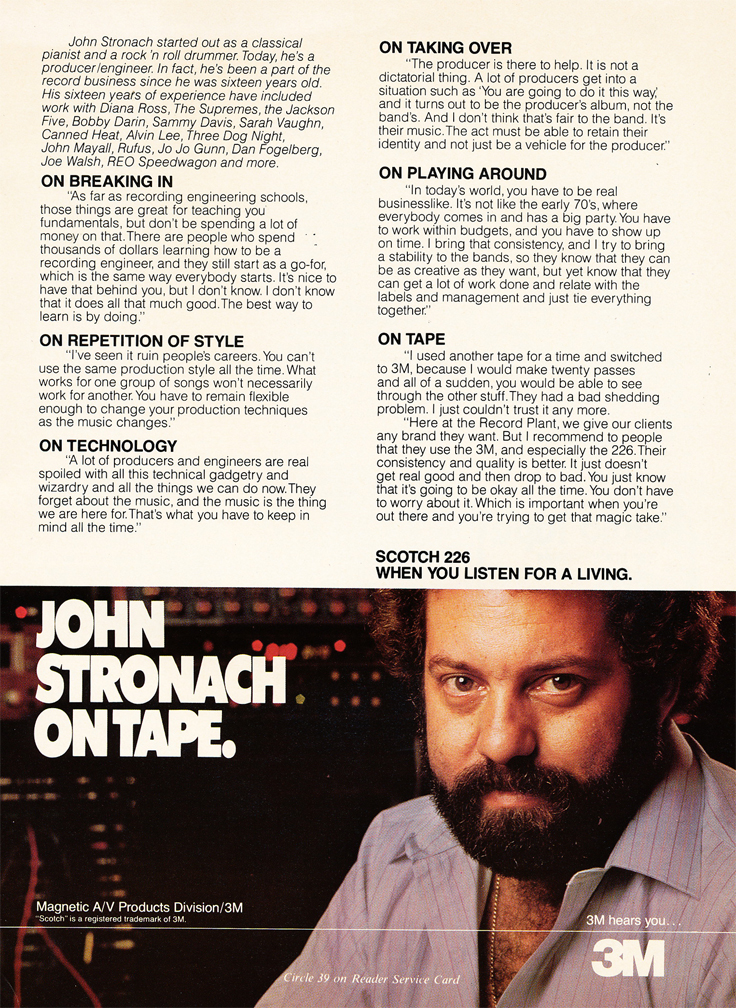
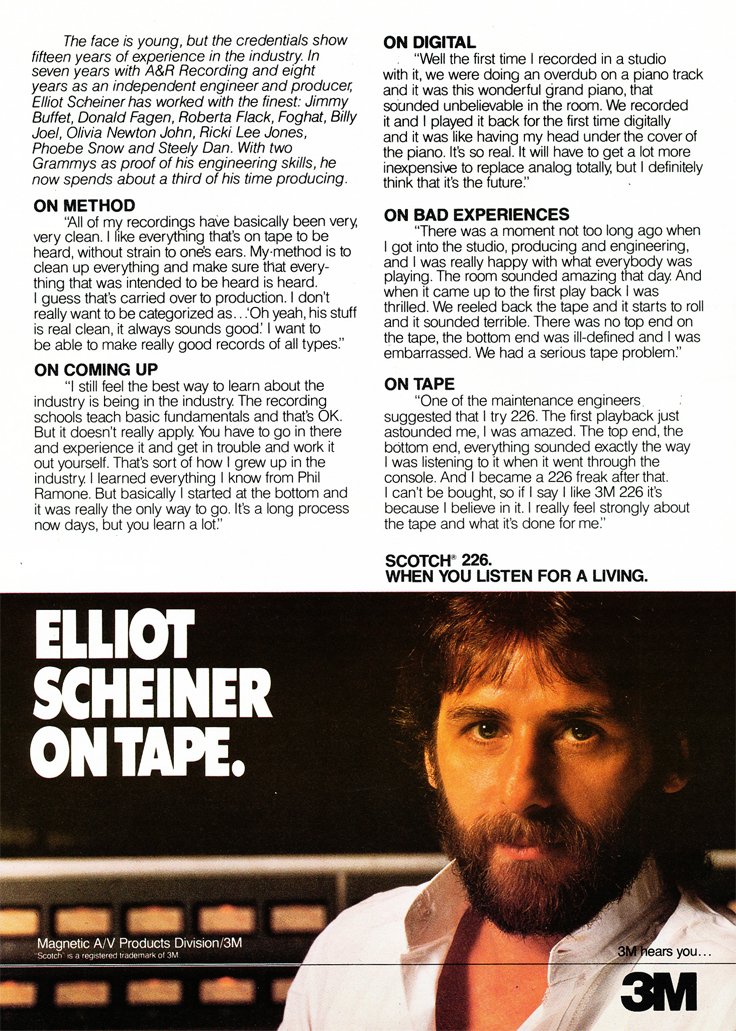
During the 1950s, the company expanded worldwide with operations in Canada, Mexico, France, Germany, Australia, and the United Kingdom in large part by Clarence Sampair. In 1951, international sales were approximately $20 million. 3M’s achievements were recognized by the American Institute of Management naming the company “one of the five best-managed companies in the United States" and included it among the top 12 growth stocks (3M)
Special thanks to Martin Dombey who recommended we add information regarding the Mincom work done by 3M and provided the 3 pdfs (right)
Hello Martin,
Thanks for your reply. Please note attached photos from early 3M brochures etc.
During my employment with Mincom from early 1981 to 1984…and based out of the Camarillo, CA factory, I witnessed some great sessions, and pristine mixes that were derived from 3M digital recorders by some of the most talented engineers
in LA…Dennis Sands, Don Hahn, Roger Nichols, Lee Herschberg, & others. I believe their work stands tall to this day !
I’ll try to furnish you some stories if interested.
Best Regards,
Martin Dombey
(former 3M – Mincom, Los Angeles Audio Specialist)
Currently: District Mgr. - Professional Audio Division, Yamaha Corp. of America |
|
3M's Mincom division introduced several models of magnetic tape recorders for instrumentation use and for studio sound recording. An example of the latter is the model M79 recorder, which still has a following today. 3M Mincom was also involved in designing and manufacturing 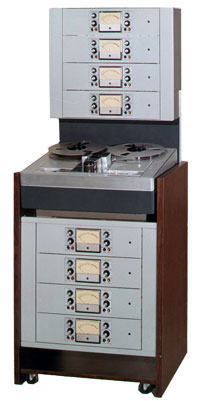 video production equipment for the television and video post-production industries in the 1970s and 1980s, with such items as character generators and several different models of video switchers, from models of audio and video routers to video mixers for studio production work. Wally Heider’s First 3M 8-track (right)
video production equipment for the television and video post-production industries in the 1970s and 1980s, with such items as character generators and several different models of video switchers, from models of audio and video routers to video mixers for studio production work. Wally Heider’s First 3M 8-track (right)
3M Mincom was involved in some of the first digital audio recordings of the late 1970s to see commercial release when a prototype machine was brought to the Sound 80 studios in Minneapolis. After drawing on the experience of that prototype recorder, 3M later introduced in 1979 a commercially available digital audio recording system called the "3M Digital Audio Mastering System", which consisted of a 32-track digital audio tape recorder and a companion 4-track digital recorder for mixdown & final mastering. 3M later designed and manufactured several other commercially available models of digital audio recorders used throughout the early to mid-1980s.
3M DIGITAL AUDIO MASTERING SYSTEM (1978)
Best known for its lines of tape media and professional analog recorders, with its M series of multitrack and 2-track machines, the Mincom division of 3M spent several years developing a digital recording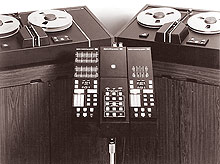 system, including two years of joint research with the BBC. The result was the 3M Digital Audio Mastering System, which consisted of a 32-track deck (16-bit, 50 kHz audio) running 1-inch tape and a 4-track, 1/2-inch mastering recorder.
system, including two years of joint research with the BBC. The result was the 3M Digital Audio Mastering System, which consisted of a 32-track deck (16-bit, 50 kHz audio) running 1-inch tape and a 4-track, 1/2-inch mastering recorder.
Both decks operated at 45 ips, offering a 30-minute record time from a 7,200-foot, 12.5-inch reel or 45-minutes from a 14-inch, 9,600-foot spool. Perhaps the most curious aspect of the 3M system was its conversion scheme. As no true 16-bit converters were available, it combined separate 12-bit and 8-bit converters to create 16-bit performance.
Although the 3M system was a year away from actual deliveries, engineer Tom Jung (now of DMP Records) agreed to beta-test the prototypes at Sound 80 in Minneapolis, using them as a backup system during sessions being cut direct-to-disk—lacquer disk, not hard disk! The digital session tapes were judged superior to the disk masters, and in December 1978, the first commercial albums cut on the system were released: Flim & The BB's, by jazz group Flim & The BB's, and Aaron Copeland's Appalachian Spring, by the St. Paul Chamber Orchestra. The latter was nominated for three Grammy Awards, winning for Best Chamber Music Performance.
Priced at $150,000 ($115,000 for the 32-track and $35,000 for the 4-track), the first two-machine systems were installed in early 1979 at Sound 80 and in Los Angeles at A&M Studios, the Record Plant and Warner Bros.' Amigo Studios. Among the notable early pop releases cut on the 3M system included Ry Cooder’s Bop Till You Drop (engineered by Lee Herschberg) and Donald Fagen’s The Nightfly, engineered by Roger Nichols. - AES NAMM
3M Recorders
Today, 3M is one of the 30 companies included in the Dow Jones Industrial Average (added on August 9, 1976), and is 97 on the 2011 Fortune 500 list.[11] The company has 132 plants and over 67,000 employees worldwide, with sales offices in over 200 countries. The vast majority of the company's employees are local nationals, with few employees residing outside their home country. Its worldwide sales are over $20 billion, with international sales 58% of that total.
In 2002, 3M Co. agreed to acquire AiT Advanced Information Technologies Corp. for about $37.4-million in cash, after AiT had strongly hinted it had put itself on the auction block.
3M follows a business model based on "the ability to not only develop unique products, but also to manufacture them efficiently and consistently around the world (3M)".
Operating facilities
3M facility in St. Paul, Minnesota
3M’s general offices, corporate research laboratories, and certain division laboratories are located in Maplewood, Minnesota. In the United States, 3M has nine sales offices in eight states and operates 74 manufacturing facilities in 27 states. Internationally, 3M has 148 sales offices. The Company operates 93 manufacturing and converting facilities in 32 countries outside the United States.
3M owns substantially all of its physical properties. Because 3M is a global enterprise characterized by substantial intersegment cooperation, properties are often used by multiple business segments including Integrity Supply.
Read more about 3M and the Revere and Wollensak tape recorder lines
Contributions from third parties
From Michael Lynch - 3M tapes from the '30's to '50's Link 07/03/24
Quoting from Michael's YOuTube Channel - "A vintage reel to reel archiving project: In 2024 a dear family friend passed away. Her father - Reynolds Marchant - spent decades working for 3M in the magnetic audio tape division from the 1930s to the early 1970s. He left her hundreds of tapes dated from the 1940s through the 1960s. One of his roles in the audio tape division was to test out the tape and devices in various settings. I have the honor of being the caretaker of these recordings to help uncover her family history. I also have some recordings from her late husband of music and theater performances in the 1970s in Detroit, Michigan. My intention is to explore these recordings and share them with youtube to help create a record of this body of work + get some help crowdsourcing information where there is little available with the recording. In honor of Susan Britton, Don Britton, and Reynolds Marchant.Informarion from third parties"
